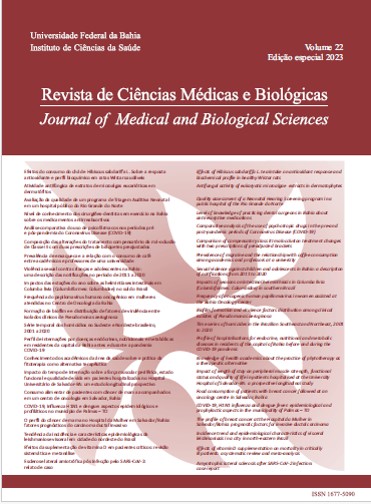Antifungal activity of eukaryotic microalgae in dermatophytes
DOI:
https://doi.org/10.9771/cmbio.v22i4.52706Palabras clave:
Microalgae, Chlorophycea, Diatom, Antifungal potential, DermatophytosisResumen
Introduction: Microalgae are considered a promising source of biologically active secondary metabolites, with several biotechnological properties already recorded, including antifungal activity. Objective: Thus, the properties of ethanol extracts of microalgae Ankistrodesmus falcatus, Chaetoceros neogracilis, Desmodesmus brasiliensis, Dunaliella tertiolecta, Kirchneriella lunaris and Tetraselmis gracilis were investigated in vitro for antifungal activity against dermatophytes Nannizzia gypsea, Nannizzia nana, Trichophyton mentagrophytes and Trichophyton tonsurans. Methods: The extracts were evaluated using broth microdilution methodology, with a test interval of 0.0115 to 6 mg mL-1. The antifungal itraconazole was tested at concentrations 0.0313 to 16 μg mL-1. Results: All microalgae extracts showed antifungal activity, especially extracts from C. neogracilis, D. brasiliensis and K. lunaris that totally inhibited growth of all species of dermatophytes evaluated. The lowest MIC values recorded were for the extracts of D. brasiliensis and K. lunaris (MIC 0.188 mg mL-1), against T. tonsurans e N. nana. Conclusions: This was a pioneering work about the antifungal activity of these microalgae against dermatophytes. It is expected that, from this study, further research will be carried out in order to identify and isolate the active biomolecules responsible for the antifungal activity of these microalgae species.
Descargas
Descargas
Publicado
Cómo citar
Número
Sección
Licencia
Derechos de autor 2024 Journal of Medical and Biological Sciences

Esta obra está bajo una licencia internacional Creative Commons Atribución 4.0.
A Revista de Ciências Médicas e Biológicas reserva-se todos os direitos autorais dos trabalhos publicados, inclusive de tradução, permitindo, entretanto, a sua posterior reprodução como transcrição, com a devida citação de fonte. O periódico tem acesso livre e gratuito.






